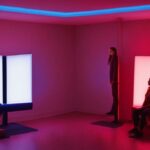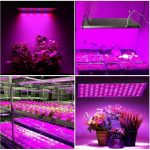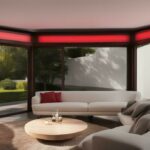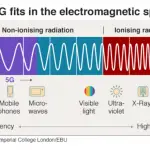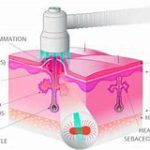Last Updated on 12 months by Francis
Light therapy, also known as phototherapy, is a popular treatment for seasonal affective disorder (SAD), a type of depression that occurs during the winter months. The treatment involves sitting in front of a light box that emits bright light similar to natural sunlight. However, the effectiveness of light therapy for SAD is often debated. In this discussion, we will explore the evidence supporting the use of light therapy for SAD and whether it is a viable treatment option.
Contents
The Science Behind Light Therapy
Seasonal Affective Disorder (SAD) is a type of depression that affects people during the winter months when there is less sunlight. Light therapy is a non-invasive treatment that uses a lightbox to simulate natural sunlight, which can help reduce symptoms of SAD. The lightbox emits a bright light that is similar to sunlight, but without the harmful UV rays.
How Does Light Therapy Work?
Light therapy works by stimulating the body’s circadian rhythm, which is the internal clock that regulates our sleep-wake cycle. The lightbox emits a bright light that is similar to natural sunlight, which helps regulate the body’s melatonin levels. Melatonin is a hormone that is produced in the brain and is responsible for regulating our sleep-wake cycle. When our melatonin levels are out of balance, it can lead to symptoms of depression and anxiety.
What Are the Benefits of Light Therapy?
Light therapy has been shown to be an effective treatment for SAD. Studies have found that it can help reduce symptoms of depression, improve sleep, and increase energy levels. It can also be used to treat other conditions, such as jet lag, shift work disorder, and non-seasonal depression.
The Effectiveness of Light Therapy for SAD
What Do Studies Say?
Several studies have been conducted on the effectiveness of light therapy for SAD. A meta-analysis of 20 randomized controlled trials found that light therapy was significantly more effective than placebo in reducing symptoms of depression in people with SAD. Another study found that light therapy was as effective as antidepressant medication for treating SAD.
What Are the Potential Side Effects?
Light therapy is generally considered safe, with few side effects. However, some people may experience headaches, eyestrain, or nausea. These side effects are usually mild and go away on their own. It is important to talk to your doctor before starting light therapy, especially if you have a history of bipolar disorder or other mental health conditions.
How Long Does It Take to See Results?
Most people start to see improvement in their symptoms within a few days to a few weeks of starting light therapy. It is important to use the lightbox as directed by your doctor or healthcare provider.
Tips for Using Light Therapy
What Type of Lightbox Should You Use?
There are many different types of lightboxes available on the market. It is important to choose a lightbox that emits at least 10,000 lux of light and has a UV filter to protect your eyes. You should also look for a lightbox that is large enough to illuminate your face and upper body.
When Should You Use Light Therapy?
It is best to use light therapy in the morning, as this can help regulate your circadian rhythm and improve your sleep-wake cycle. You should aim to use the lightbox for 30 minutes to 1 hour each day, depending on your individual needs.
How Far Should You Be from the Lightbox?
You should sit about 16-24 inches away from the lightbox, with the light positioned above your eyes. This will help ensure that the light is reaching your eyes at the correct angle.
What Is the Best Time to Use Light Therapy?
The best time to use light therapy is in the morning, as this can help regulate your circadian rhythm and improve your sleep-wake cycle. You should aim to use the lightbox for 30 minutes to 1 hour each day, depending on your individual needs.
Consistency Is Key
It is important to use light therapy consistently to see the best results. Try to use the lightbox at the same time each day, and make it part of your daily routine.
Don’t Overdo It
While light therapy is safe, it is important not to overdo it. Using the lightbox for too long or at the wrong time of day can disrupt your sleep-wake cycle and worsen symptoms of SAD.
Combine Light Therapy with Other Treatments
Light therapy can be used in combination with other treatments for SAD, such as counseling, medication, and lifestyle changes. Talk to your doctor or healthcare provider about the best treatment plan for you.
FAQs – Does Light Therapy Actually Work for SAD?
What is SAD?
SAD stands for Seasonal Affective Disorder which is a type of depression that is related to changes in the seasons. It usually starts in late fall or early winter when the days get shorter and lasts until spring or summer when the days get longer. Symptoms of SAD include seasonal depression, fatigue, weight gain, lack of interest in activities, and social withdrawal.
What is light therapy?
Light therapy is a form of treatment that uses artificial light to simulate exposure to sunlight. The idea behind light therapy is that it can help to treat SAD by mimicking the effects of natural sunlight on the body. Light therapy can be done with a device called a light therapy box, which emits bright light that is designed to simulate the light from the sun.
Does light therapy actually work for SAD?
Yes, light therapy has been shown to be an effective treatment for SAD. Studies have shown that light therapy can improve symptoms of depression in 60-80% of people with SAD. The light from the therapy box can help to regulate the levels of melatonin and serotonin in the body, which can improve mood and energy levels.
How long does it take for light therapy to work?
For most people, light therapy can start to improve symptoms within a few days to a few weeks of starting treatment. However, it may take longer for some people to see improvement. It is important to use the light therapy box consistently and regularly, typically for 30 minutes to 2 hours a day, until symptoms improve.
Are there any side effects of light therapy?
Light therapy is generally considered safe and has few side effects. Some people may experience eyestrain, headaches, or nausea during treatment. It is important to use the light therapy box as directed and to talk to a healthcare professional if you experience any side effects.
Can light therapy be used with other treatments for SAD?
Light therapy can be used alone or in combination with other treatments for SAD, such as medication or therapy. It is important to talk to a healthcare professional to determine the best course of treatment for your individual needs.


